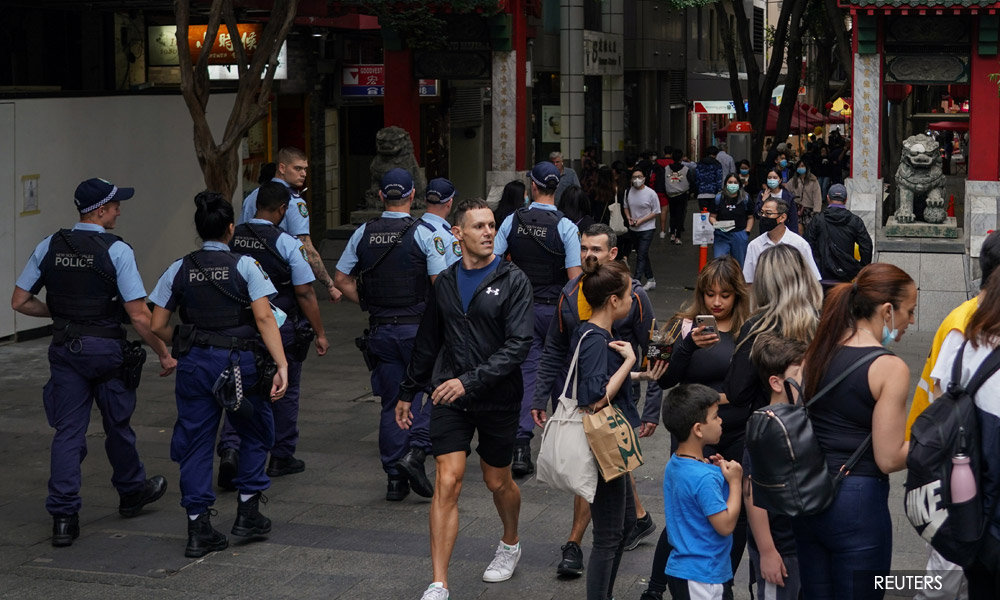A friend’s son overstayed his student visa in Australia. What could he do? What if … and so forth, as any parent would ask. He has few options, I said. When his visa expires, well, it expires.
My friend’s son is among the thousands of Malaysian overstayers - officially termed “unlawful non-citizens”. If caught, they can be detained and deported at their own expense.
The unintended consequences? They have made it harder for genuine travellers to apply for an Electronic Travel Authority (ETA).
News of friends having their ETA applications rejected (Subclass 600 and 601) despite having submitted supporting documents are not new. Some have burnt their tickets. Some have missed visiting families.
Victimised? Yes, on the outset. And annoyingly so when the Australian Home Affairs Department replies, days or weeks later, with this note: “Provide additional information by completing Form 1554: ETA Request for further processing and attach it to your application in ImmiAccount.”
Yet there’s no certainty any “supplementary information” is sufficient to convince the Australian authorities of the applicant’s incentive to return after a three-month visit or less.
That’s the issue - proof of incentive to return home.
‘Protection visa’
Malaysian visitors, though in the minority, have historically used their ETA to either overstay or as a gateway to apply for a “protection visa”, which allows them to work for as long as eight years.
(Malaysians were reportedly the top asylum seekers arriving by plane in 2019-2020, according to the Refugee Council of Australia. However, only a minority was granted a protection visa, the most recent being transgender cosmetic entrepreneur, Nur Sajat.)

Reportedly exploited by organised visa scammers or driven by the accessibility to work for cash-in-hand – often below the minimum hourly wage of AUS$21 (about RM65) - Malaysian overstayers have been working in restaurants, as food deliverers, seasonal farm workers and odd jobs shunned by the locals. Field intelligence has led to Australian Border Force’s raid on illegal seasonal farm workers and suspect workplaces.
Malaysians breaking their visa conditions is old news though. But there is a legal avenue.
There is the work and holiday visa (subclass 462). It allows Malaysians to work for up to 12 months (with a maximum of six months with one employer) to support their extended holiday. A total of 1,100 places are allocated for Malaysians each year, according to the Home Affairs Department.
Worst nightmare
What is the worst nightmare for genuine travellers? It is first having an ETA application approved, then denied boarding at the departure lounge.
While cases of ‘not-OK-to-board’ are rare, interception of Malaysian travellers by plainclothes airline liaison officers had happened. It nevertheless raises the question why?

The answer lies in Australia’s extension of its border security measures - or “pre-border intervention mission” - to the ETA application process, and if that slips through, at the departure lounge.
The Kuala Lumpur International Airport (KLIA) is one of the primary targets - for several years now. And this will continue as long as Malaysia remains on the Australian Border Force’s blacklist of overstayers and visa scammers.
According to a 2019 Parliamentary inquiry on visa compliance, over 23 million ETAs were granted over 10 years up to 2018. About 10,000 of those ETA holders overstayed. Three-quarters of them were Malaysians.
The top five nationalities of overstayers in 2017 were Malaysia (15 percent), China (9.5 percent), the US (eight percent), the UK (5.6 percent), and India (4.1 percent).
Today’s percentage of Malaysian overstayers is probably higher, notwithstanding the deployment of Australian Border Force’s airport liaison officers at KLIA “trained” to spot problematic travellers.
According to the Australian Border Force 2020 report, there are 30 airport liaison officers located at 17 key international airports including principal migration officers who are posted in Dubai, Guangzhou and Kuala Lumpur.
How does the pre-departure intervention by airport liaison officers work even as they are seen to be allegedly racially profiling Malaysian travellers?
John Coyne, head of the border security programme at the Australian Strategic Policy Institute explained in this report: “Airline check-in counters perform initial checks to confirm travel documentation and forward passenger details to Australia to support the Australian Border Force’s risk-based framework for processing overseas arrivals.
“Australia’s use of financial sanctions against air carriers that allow passengers to arrive in Australia with false or incorrect travel documentation - passports and visas - makes this an effective mechanism.”
Hence, it is about balancing the authenticity of travellers’ motivation against the probability of non-compliance with ETA visa conditions. It is rarely a case of complete certainty when airport liaison officers decide to intervene.
No matter how “well-trained”, an airport liaison officers’s intuition at times does not make for a fair judgement call. The ultimate victims? Genuine Malaysian travellers. - Mkini
ERIC LOO is a former journalist and educator in Australia, and a journalism trainer in parts of Asia.
The views expressed here are those of the author/contributor and do not necessarily represent the views of MMKtT




No comments:
Post a Comment
Note: Only a member of this blog may post a comment.